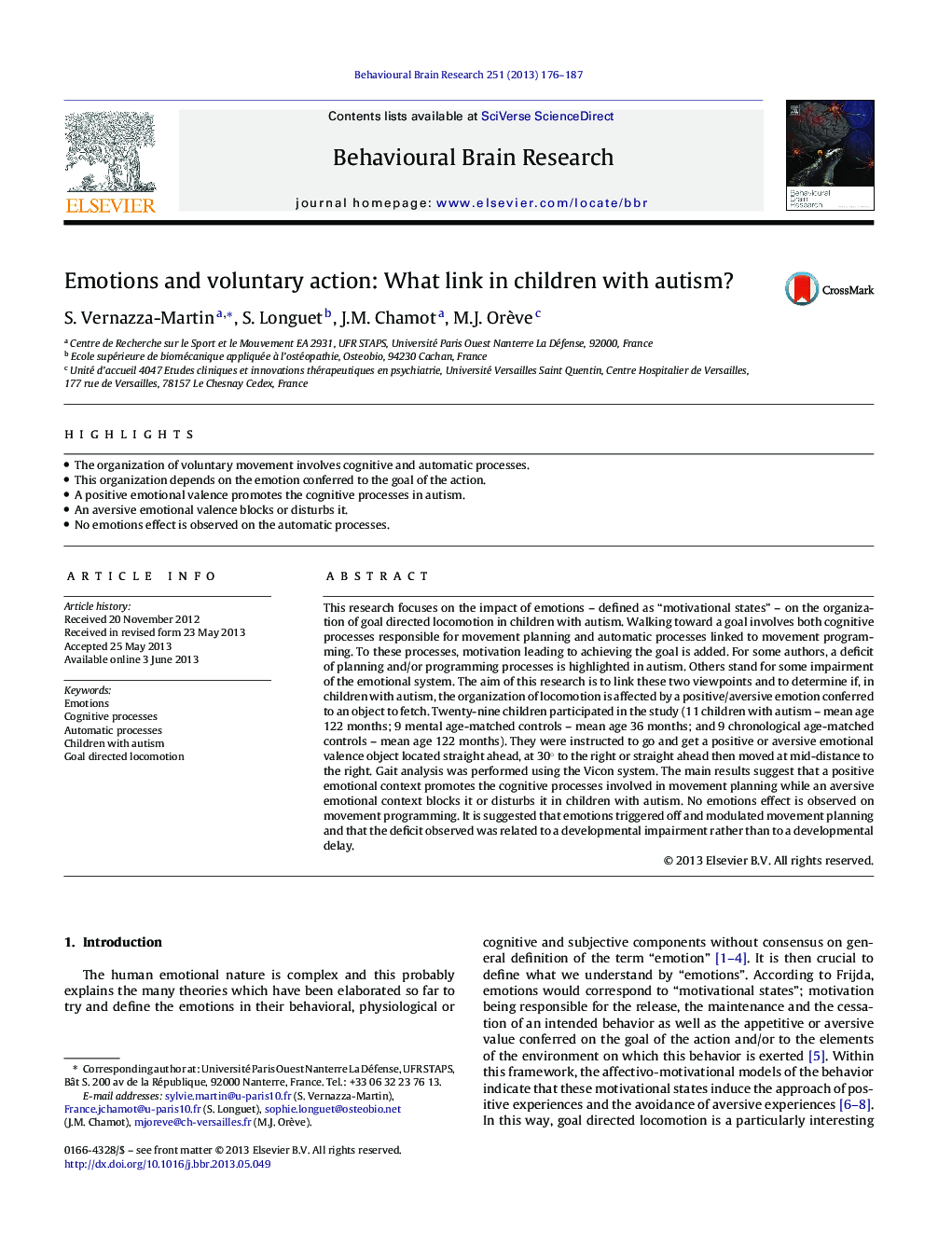| کد مقاله | کد نشریه | سال انتشار | مقاله انگلیسی | نسخه تمام متن |
|---|---|---|---|---|
| 6259095 | 1612981 | 2013 | 12 صفحه PDF | دانلود رایگان |
- The organization of voluntary movement involves cognitive and automatic processes.
- This organization depends on the emotion conferred to the goal of the action.
- A positive emotional valence promotes the cognitive processes in autism.
- An aversive emotional valence blocks or disturbs it.
- No emotions effect is observed on the automatic processes.
This research focuses on the impact of emotions - defined as “motivational states” - on the organization of goal directed locomotion in children with autism. Walking toward a goal involves both cognitive processes responsible for movement planning and automatic processes linked to movement programming. To these processes, motivation leading to achieving the goal is added. For some authors, a deficit of planning and/or programming processes is highlighted in autism. Others stand for some impairment of the emotional system. The aim of this research is to link these two viewpoints and to determine if, in children with autism, the organization of locomotion is affected by a positive/aversive emotion conferred to an object to fetch. Twenty-nine children participated in the study (11 children with autism - mean age 122 months; 9 mental age-matched controls - mean age 36 months; and 9 chronological age-matched controls - mean age 122 months). They were instructed to go and get a positive or aversive emotional valence object located straight ahead, at 30° to the right or straight ahead then moved at mid-distance to the right. Gait analysis was performed using the Vicon system. The main results suggest that a positive emotional context promotes the cognitive processes involved in movement planning while an aversive emotional context blocks it or disturbs it in children with autism. No emotions effect is observed on movement programming. It is suggested that emotions triggered off and modulated movement planning and that the deficit observed was related to a developmental impairment rather than to a developmental delay.
Journal: Behavioural Brain Research - Volume 251, 15 August 2013, Pages 176-187
